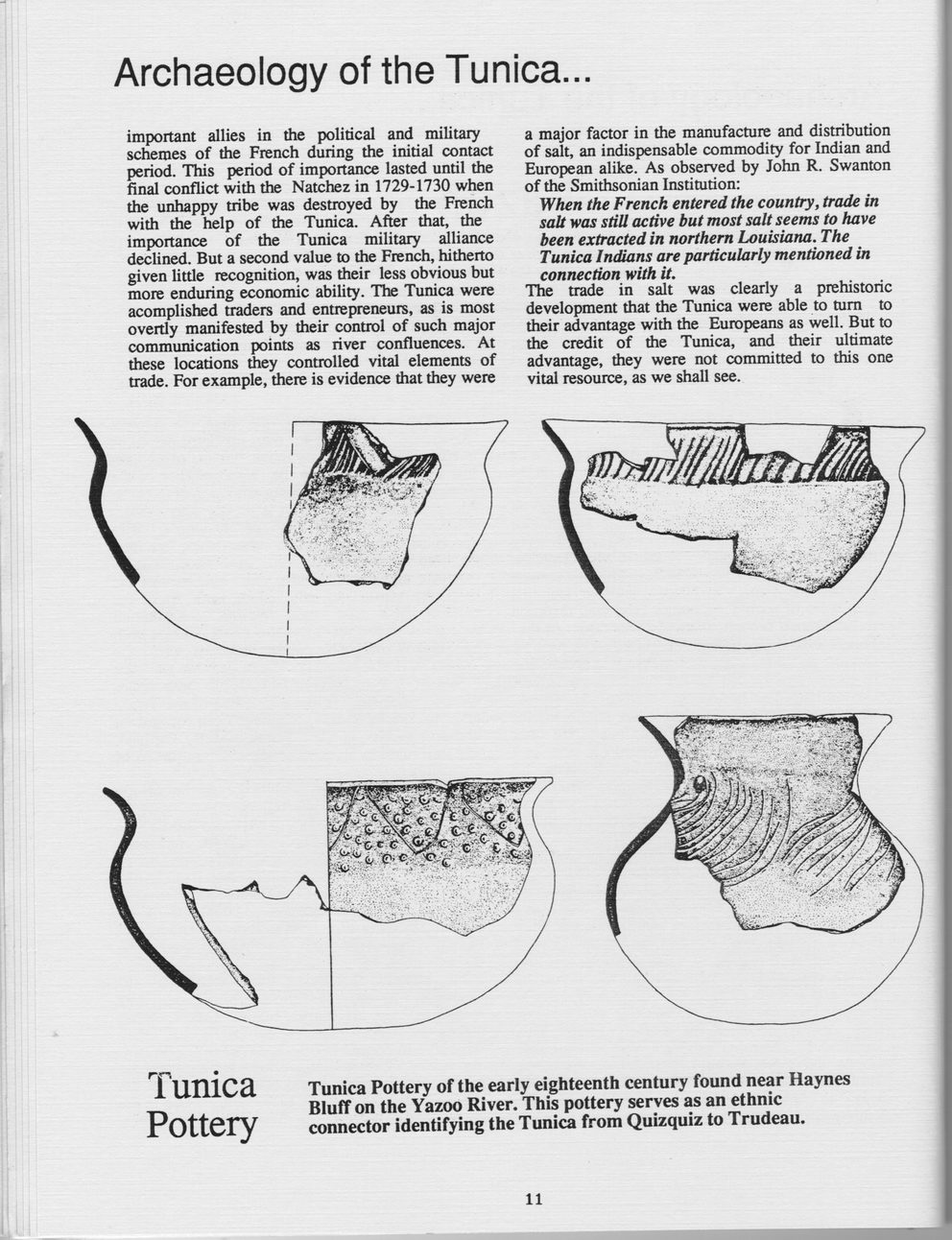This text was obtained via automated optical character recognition.
It has not been edited and may therefore contain several errors.
Archaeology of the Tunica. important allies in the political and military schemes of the French during the initial contact period. This period of importance lasted until the final conflict with the Natchez in 1729-1730 when the unhappy tribe was destroyed by the French with the help of the Tunica. After that, the importance of the Tunica military alliance declined. But a second value to the French, hitherto given little recognition, was their less obvious but more enduring economic ability. The Tunica were acomplished traders and entrepreneurs, as is most overtly manifested by their control of such major communication points as river confluences. At these locations they controlled vital elements of trade. For example, there is evidence that they were a major factor in the manufacture and distribution of salt, an indispensable commodity for Indian and European alike. As observed by John R. Swanton of the Smithsonian Institution: When the French entered the country, trade in salt was still active but most salt seems to have been extracted in northern Louisiana. The Tunica Indians are particularly mentioned in connection with it. The trade in salt was clearly a prehistoric development that the Tunica were able to turn to their advantage with the Europeans as well. But to the credit of the Tunica, and their ultimate advantage, they were not committed to this one vital resource, as we shall see. rri 1 unica Tunica Pottery of the early eighteenth century found near Haynes _ Bluff on the Yazoo River. This pottery serves as an ethnic rottery connector identifying the Tunica from Quizquiz to Trudeau. 11

Native Americans The-Tunica-Biloxi-Tribe-its-Culture-and-People-(18)